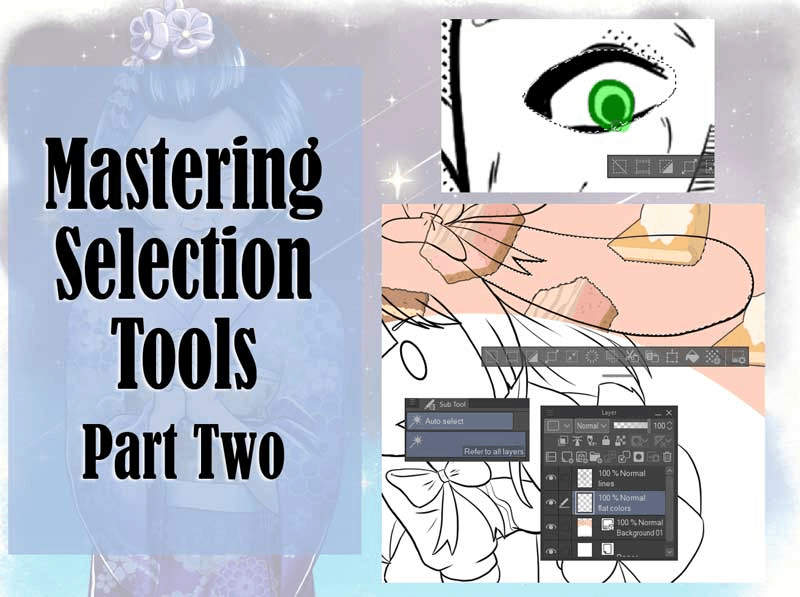Alien invasion
objective
In this tutorial we will see how to paint an alien invasion scene using the functionality included in Clip Paint Studio (CPS onwards).
Import a 3D model from a spaceship
First, search the internet for a 3D spacecraft model that you like. We will use it as a reference. For example, you can search on the following web pages.
In my case I created my own model using Blender. It is not necessary to use a complicated model since we will only use it as a reference to paint over.
Once you have the 3D model, you just have to drag it to CPS. Make sure the 3D model is in one of the formats supported by CPS such as .obj or .fbx.
When you import the model, a new layer will be created. This layer will have a linked (perspective environment) rule. Double click on the ruler to show it. Then, create a new layer and drag the rule to the new layer to use as a reference in the following steps. Adjust the vanishing point of the ruler, as well as the size, place and angle of the spacial ship.
Drawing the sketch
With the rule as a reference, we begin to draw our sketch using only gray tones. Using grays instead of painting color directly simplifies the initial process and allows us to focus on the brightness contrasts.
Next, we apply a correction layer of the gradient map type. This allows us to assign some base colors to our initial sketch on which to continue moving forward.
Painting the landscape with Gouache
We create a layer on our sketch, and we begin to paint the landscape. To paint landscapes I recommend the Gouache brush, which is included in CPS. This brush is very versatile and allows textured strokes. I usually use it with the default values and the amount of 100% paint. When I want my strokes to mix with the colors previously painted, under the amount of paint to approximately 75%. When choosing colors, remember that in nature colors usually have low saturation. It is also useful to think about saturation and color contrasts, which complement the brightness contrasts. When I choose a color, I like to compare it with the color that will be next to it. When you double click on the main color, you can compare it with the color you previously used in the upper left of the color settings window. Unfortunately, the CPS color wheel does not include this information.
As you have already observed, during the process I decided to change quite a few things from the initial sketch. It is normal for you to come up with ideas while painting.
On the color layer, we add three correction layers. One to accentuate the shadows in multiplication mode. Another to add enhancements in overlay mode. And one last layer to adjust the Saturation. The correction layers have an associated mask that allows them to be applied only to specific parts of the paint. In this case, we can see that saturation has been applied mainly to the ruins in the left zone.
Heaven
For heaven I have cut a photo I took near my house. The photos are very useful when composing. To avoid falling into copyright infringements, I recommend using your own photos.
To harmonize the photo with the paint add a correction layer and adjust the levels of hue, saturation, and brightness.
The spaceship
We create a layer on the spaceship, and paint it above. To paint the ship I used the polygonal selection tool, since it allows me to paint exactly the straight lines and corners of the ship. I have also made some copies and placed them in the distance with less opacity to give a sense of depth.
The invading aliens
We paint an alien using the G-pen with 70% opacity. Then we duplicate it several times. We add details to each one, as well as changes of orientation so that it is not noticed that we have copied them and it looks natural. We place the aliens at different distances and change their size, using two converging lines at the vanishing point as a reference.
To give a sense of depth, we move the aliens horizontally so that they partially overlap.
Last touches
In the last step, we add two new layers. One of them in overlay mode, where using the color of the sky we add some ambient light. And the other layer in Add mode (brightness), serves to raise the mysticism of the aliens.
Conclusions
In this tutorial we have seen how to paint an alien invasion scene using the extensive functionality of CPS. If you are curious you can download the final file, with a resolution reduced to a quarter, at the following address.










Comment